If you’re looking to add a fast-growing, low-maintenance, and nutrient-rich tree to your garden, learning how to grow Moringa at home might be the perfect choice. Also known as the Drumstick Tree, Moringa is packed with health benefits and can thrive in various climates, especially warmer regions.

Whether you’re planning to grow it in your backyard or in a pot on your balcony, this plant adapts well to different environments. With the right well-draining soil for Moringa, enough sunlight, and minimal care, you can enjoy fresh leaves, pods, and seeds right from your garden.
The process of Moringa seed germination is quick, and once established, the tree requires very little attention. You’ll love the versatility of this plant—not only for its medicinal uses of Moringa but also for its role in food and water purification. Discover how easy and rewarding it is to start your own Moringa journey today.
Let me know if you’d like a version for a meta description or email introduction!
Introduction to Moringa (Drumstick Tree)
The Moringa tree, also known as the Drumstick Tree, is famous for its fast growth and many health benefits. It grows well in both warm outdoor gardens and sunny balconies across the USA. People love it for its leaves, seeds, pods, and even bark. Every part of this tree is useful.
From medicinal uses of Moringa to its value in food and water purification, this tree is a true gift from nature. It is easy to care for once planted correctly. In this guide, you’ll learn how to grow Moringa at home in simple steps.
Key Nutritional Benefits of Moringa
The Moringa plant benefits your body in many ways. Its leaves are rich in vitamins A, C, and E. They also contain calcium, potassium, iron, and amino acids. This helps boost your energy, support your immune system, and fight inflammation.
You can enjoy green and tender drumsticks in your meals or use the dried leaves to make powder or tea. Using Moringa seeds, bark, leaves is common in many cultures. It’s a natural and affordable way to stay healthy.
Varieties of Moringa You Can Grow
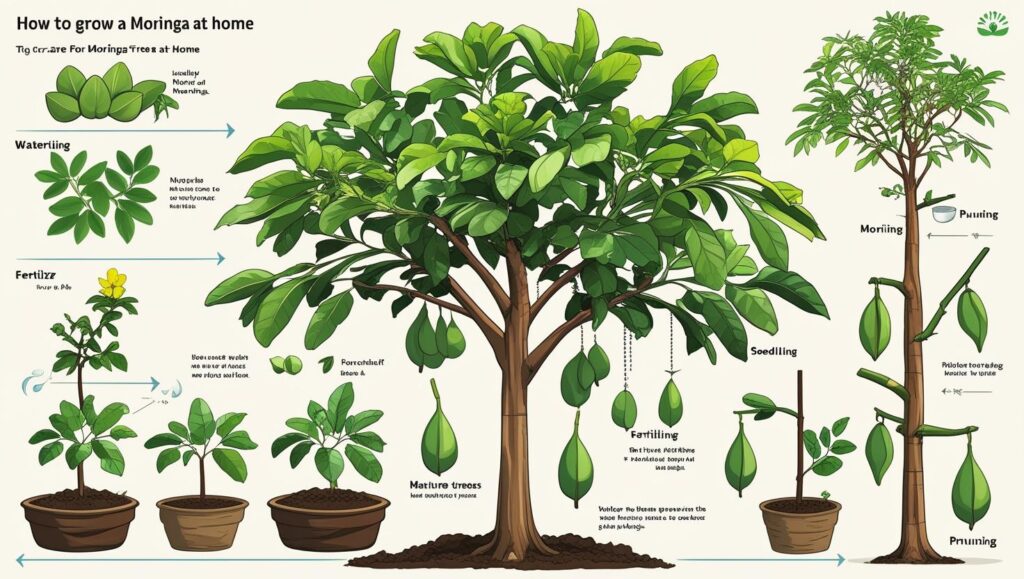
Most people grow Moringa oleifera, which is the easiest and fastest-growing type. It grows well in warm weather and is the best choice for home gardeners in the USA.
Other varieties like Moringa stenopetala and Moringa peregrina grow slower and are harder to find. If you want to start growing now, choose AllThatGrows Moringa seeds or other high-quality moringa seed sources available online.
Choosing the Right Location for Planting
Choose a place that gets a lot of sun. The sunlight requirement for Moringa is at least 6-7 hours daily. Whether it’s a garden bed, balcony, or patio, make sure it gets light all day.
If you want to grow Moringa in garden beds, make sure there is enough space. You’ll need room for the roots and wide growth. The right planting distance for Moringa trees is about 3 meters between each tree.
Ideal Climate, Temperature & Humidity
Subtropical and tropical climate zones are ideal. In the USA, states like Florida, Texas, and California are best. But you can still grow Moringa indoors in colder areas using indoor container gardening methods.
The best temperature for Moringa growth is between 70–95°F (21–35°C). This is the ideal soil temperature for Moringa seed germination. If your region is cold, learn about overwintering Moringa indoors to protect the plant.
Starting with Seeds vs Cuttings
Starting with seeds gives stronger trees with deep roots. This supports Moringa taproot development and makes the plant drought-resistant. Moringa seed germination takes 7 to 14 days under the right conditions.
Cuttings grow faster at first and can be used for Moringa branch propagation. However, they don’t live as long as seed-grown trees. Both ways work, but seeds are better for beginners.
How to Grow Moringa from Seeds (Step-by-Step)
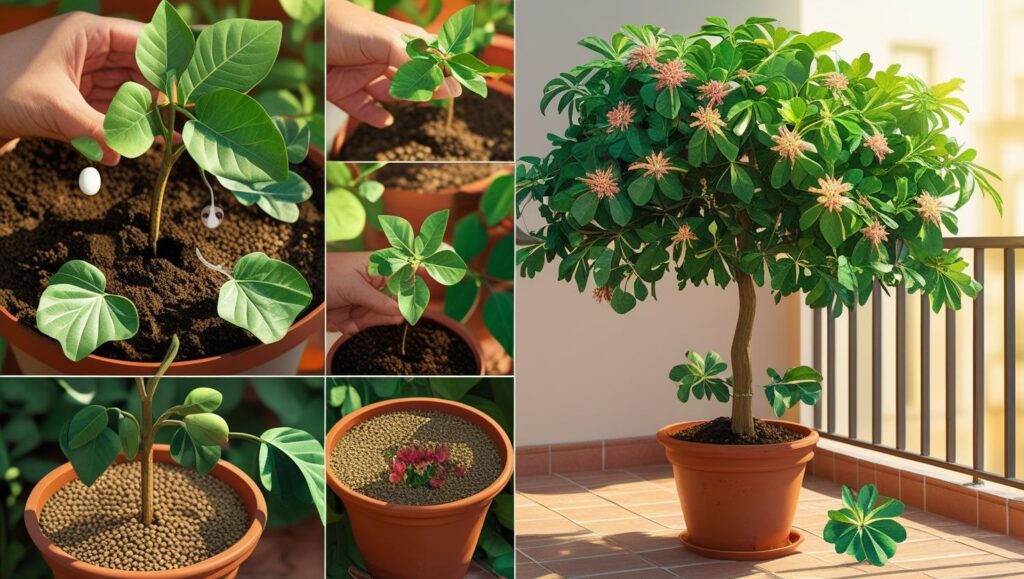
Choose good seeds. You can buy Moringa seeds online from trusted places like AllThatGrows. The best time to plant Moringa seeds is in spring or late summer. Soak the seeds for 24 hours before planting.
Sow them about 1 inch deep. This is the correct Moringa planting depth. Keep the soil warm and slightly moist. You can refer to this simple germination guide:
Step | What to Do
1 Soak seeds overnight.
2 Plant 1 inch deep in warm soil.
3 Water lightly.
4 Keep in warm place with sunlight.
How to Grow Moringa from Cuttings
Cut a branch that is at least 1 inch thick and 2 feet long. Stick it 1/3 of the way into the soil. Water lightly every few days. Don’t overwater.
The cuttings will grow roots in 2–3 weeks. They need warmth and sun. This method works best in warmer states. If done right, it’s a quick way to grow more trees.
Potting Moringa: Ideal for Balcony or Small Spaces
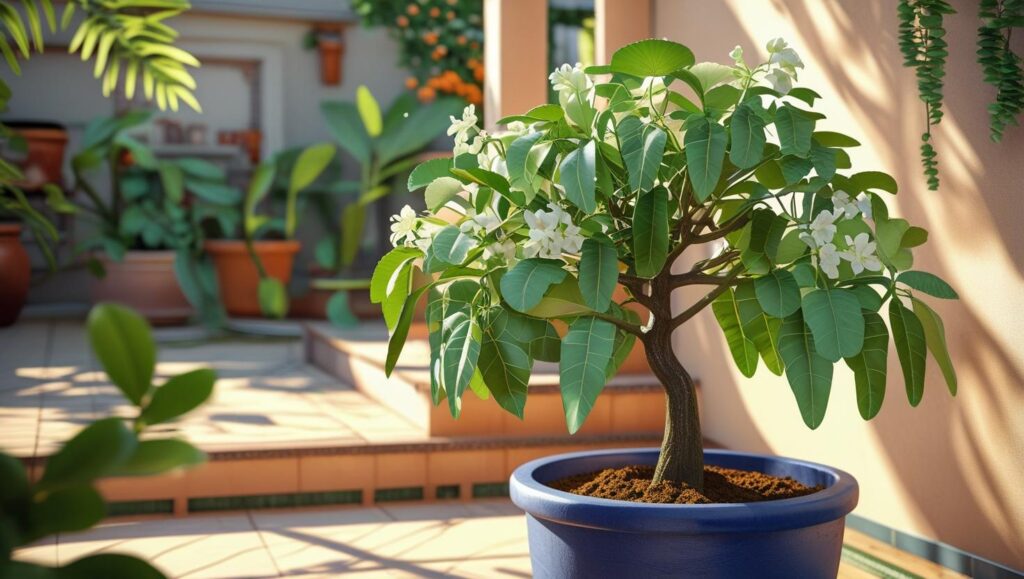
Growing Moringa in containers or pots is perfect for small homes. Use a large container with holes for drainage. A 20-gallon pot is ideal.
Add a potting mix for Moringa with sand and compost. Make sure it drains well. Rotate the pot for even sun exposure and bring it indoors in cold months for overwintering Moringa indoors.
Watering and Fertilizing Needs
Check the soil moisture level often. Stick your finger 2 inches deep. If it feels dry, it’s time to water. Follow a watering schedule for Moringa: once or twice a week depending on the season.
Use compost or liquid fertilizer every 4–6 weeks. Don’t use too much. Too much water or food can cause poor drainage signs in soil, like yellowing leaves or root rot.
Soil Preparation and Maintenance
Use well-draining soil for Moringa. If your soil holds water too long, add sand or coconut husk. The tree prefers semi-watered soil preference to avoid rot.
Here is a good potting mix for Moringa:
- | Ingredient | Ratio |
- | Garden soil | 50% |
- | River sand | 25% |
- | organic mix | 25% |
Pruning Techniques for a Healthy Moringa Tree
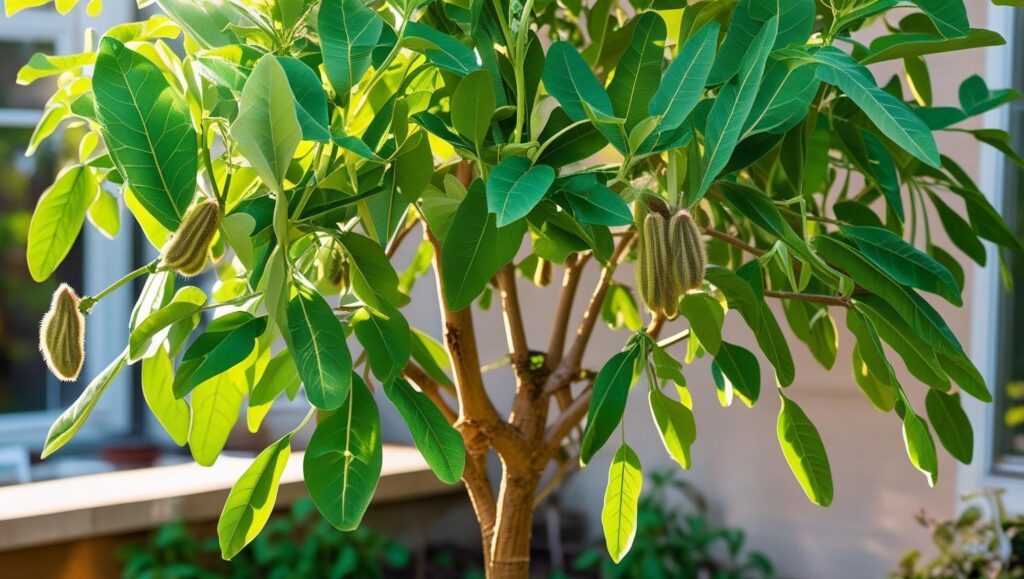
Pruning Moringa trees helps make them bushy and productive. Start when the tree is 8–10 inches tall. Cut the top to encourage side branches.
Regular pruning promotes Moringa growth and helps keep the tree manageable. The cut branches can be used for Moringa branch propagation if you want more plants.
Managing Pests and Diseases in Moringa
Moringa has few pests, but watch for aphids and caterpillars. Spray neem oil or soapy water to stop them. Keep the area clean.
If leaves turn yellow or drop, check for poor drainage signs in soil or fungal infections. Fix watering or improve air circulation around the plant.
Overwintering Moringa in Cold Regions
In colder areas, move the plant indoors before the first frost. Use indoor container gardening for winter care. Place it near a sunny window or use grow lights.
Cut back the plant and reduce watering. This helps it rest during cold months. Overwintering Moringa indoors keeps it alive until spring.
How to Get Moringa to Bloom and Produce Pods
For flowers and pods, the tree needs age and sunshine. After 8 months to 1 year, it may bloom. Ensure daily sunlight for Moringa and don’t over-fertilize.
When it starts to flower, water less and give more compost. The tree will produce green and tender drumsticks, ready for harvest.
Harvesting Moringa Leaves, Pods, and Seeds

You can start harvesting Moringa leaves when the tree is 3 feet tall. Cut young branches and use fresh or dried leaves. Leaves grow back quickly.
When to harvest Moringa pods? Pick them when they are green, tender, and about a foot long. Mature pods give seeds that you can plant or eat.
Common Problems and How to Fix Them
If leaves are yellow, check soil or water. Drooping plants may need more sunlight. If there’s no pod production, improve pruning or add compost.
Tips for transplanting Moringa successfully include keeping the root ball intact and planting during warm seasons. This prevents shock and supports healthy growth.
Final Tips for Thriving Moringa Plants at Home
Always follow a Moringa care guide and adapt it to your local weather. Use compost, prune often, and give full sunlight. Talk to local gardeners or check USA plant groups online.
Whether you’re in Texas or Michigan, you can enjoy this wonderful tree. The step-by-step guide to planting Moringa seeds above will help you enjoy fresh Moringa in no time. Stay patient, and your Moringa maintenance tips will soon pay off!
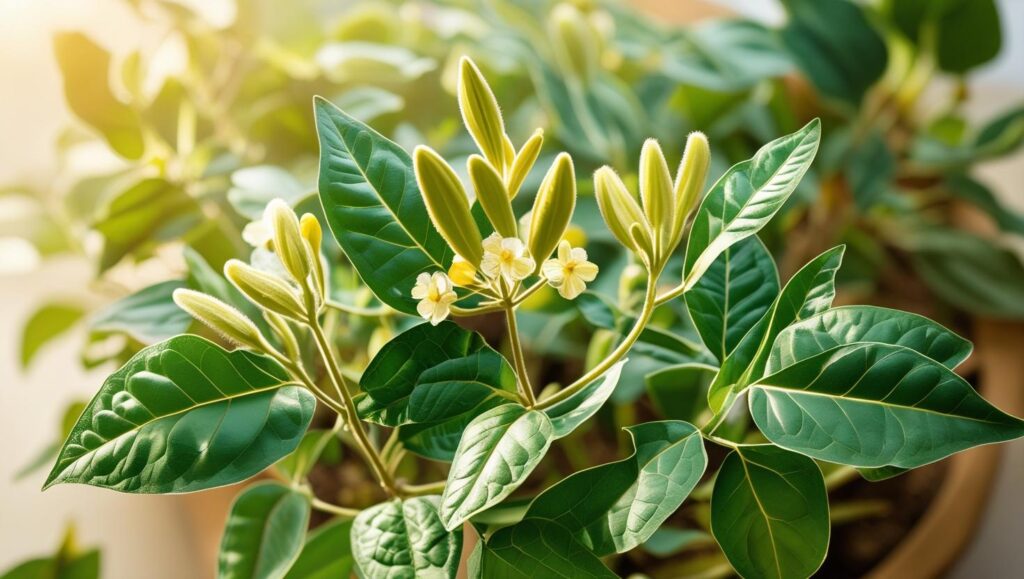
Leave a Reply